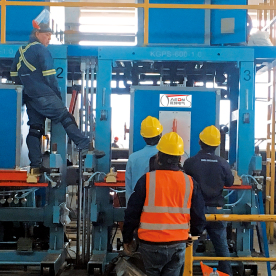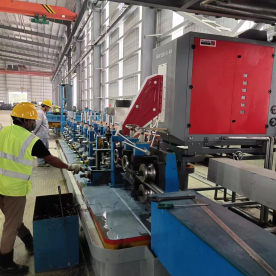In the fast-paced and technologically-driven world of manufacturing, the role of specialized machinery has become ever more crucial. Among these machines, the stainless steel tube making machine stands out for its versatility and significance across various industries. From automotive to construction, the demand for high-quality stainless steel tubes continues to grow as they offer durability, corrosion resistance, and aesthetic appeal. This article explores the evolution of stainless steel tube making machines, their operational principles, and their vital role in manufacturing processes today.
Historically, the production of metal tubes has undergone significant transformations. Early techniques relied heavily on manual processes, which were labor-intensive and time-consuming. However, advancements in technology have led to the development of stainless steel tube making machines that are not only efficient but also produce consistent and high-quality results. These machines use sophisticated controls and automation to streamline production processes.
Stainless steel tube making machines are designed to manufacture tubes of various shapes, sizes, and thicknesses. The process typically involves several steps, including material feeding, forming, welding, and finishing. Stainless steel strips or coils are fed into the machine, where they are first shaped into a tubular form. The edges of the tube are then joined together through various welding techniques, such as TIG (Tungsten Inert Gas) or laser welding. After welding, the tubes undergo a series of finishing processes that may include cutting, polishing, and cleaning to meet specific quality standards.
One of the key advantages of stainless steel tube making machines is their ability to produce tubes with precise dimensions and tolerances. This capability is critical in applications where performance and safety are paramount, such as in the construction of pressure vessels or piping systems. The accuracy achieved through automated machine processes minimizes waste, optimizes material usage, and ultimately contributes to cost savings for manufacturers.

The Evolution and Importance of Stainless Steel Tube Making Machines in Modern Manufacturing
Furthermore, stainless steel tubes manufactured using these machines offer unparalleled benefits over traditional materials. The corrosion resistance of stainless steel makes it an ideal choice for various environments, especially in industries like food and beverage, pharmaceuticals, and oil and gas, where hygiene and safety are top priorities. The longevity of stainless steel tubes reduces the need for frequent replacements, enhancing sustainability efforts and reducing overall operational costs.
The advent of Industry 4.0 and the Internet of Things (IoT) has further propelled the evolution of stainless steel tube making machines. Modern machines are equipped with smart technologies that allow for real-time monitoring and data analysis, ensuring optimal performance and maintenance. Predictive maintenance, enabled by IoT integration, can alert manufacturers to potential issues before they lead to machine failure, minimizing downtime and unexpected costs.
Training and skill development play a critical role in optimizing the use of stainless steel tube making machines. As technology progresses, the need for skilled operators who can handle these advanced machines becomes paramount. Manufacturers must invest in training programs to ensure that their workforce is equipped with the necessary skills to operate, maintain, and troubleshoot these machines effectively.

The Evolution and Importance of Stainless Steel Tube Making Machines in Modern Manufacturing

The Evolution and Importance of Stainless Steel Tube Making Machines in Modern Manufacturing
Moreover, environmental considerations are increasingly influencing the design and operation of stainless steel tube making machines. Many manufacturers are seeking ways to reduce energy consumption and minimize waste during the production process. Innovations, such as energy-efficient motors and recycling systems, are becoming integral features of modern machines. This shift not only helps in meeting regulatory standards but also aligns with the growing demand for sustainable manufacturing practices.
In conclusion, stainless steel tube making machines are indispensable to modern manufacturing, driving efficiency, precision, and quality in tube production. Their ability to adapt to various applications across industries highlights their integral role in fostering innovation and meeting the demands of a rapidly evolving market. As technology continues to advance, these machines will remain at the forefront, ensuring that the manufacturing sector can keep pace with the needs of the modern world. The future of stainless steel tube production is undoubtedly bright, fueled by continuous improvement and the pursuit of excellence.Solid State HF Welder Replacement Parts



